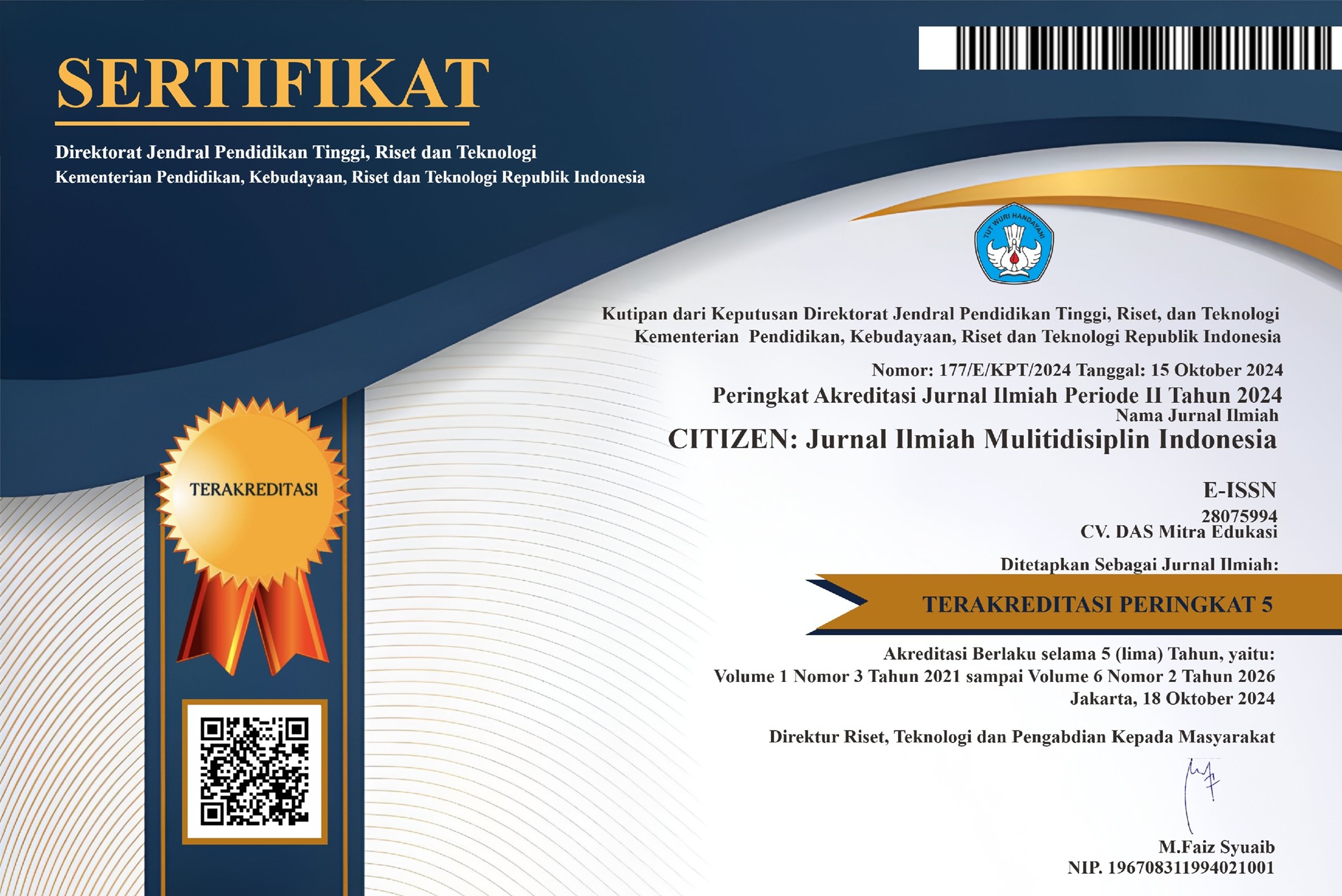EXPERIMENT ON CHEMICAL ATTACHMENT OF ANCHOR DEFORM DEPTH 110 MM CAST-IN PLACE AND POST-INSTALLED DRILL BIT EXTRACTOR METHOD
DOI:
https://doi.org/10.53866/jimi.v2i3.107Keywords:
Anchor Deform, Pullout failure, Cast In Place, Post InstalledAbstract
The anchor is one of the steel elements that can withstand the adhesive force against the concrete. The study aims to determine the adhesive strength between the anchor and the concrete through two anchor installation methods: the cast-in-place method with three test objects and post-installed chemical epoxy in two plain hole models with three test objects. And threaded three test specimens using a drill bit extractor Sika Anchorfix-2 chemical epoxy adhesive. Anchor deform model D13 is used with a depth of planting (hef) of 110 mm, which is planted on nine cylinders of 300 x 150 mm with a quality of fc 32.26 MPa. This study aims to determine the pulling capacity, adhesive strength, and damage patterns in the cast-in-place and post-installed methods. The results of the pull-in strength test using the cast-in-place method are 34323.28 N, the post-installed method is plain hole 37919.05 N, and the drill hole is 38572.82 N. The adhesive strength (µ) post-installed drill hole is 9.27 MPa > adhesive strength (µ) cast in place 7.64 MPa with an increase (phi) of 1.21 times, adhesive strength (µ) post installed plain hole 7.84 MPa > adhesive strength (µ) cast in place 7.64 MPa with an increase (phi) of 1 .03 times, adhesive strength (µ) post installed drill hole 9.27 MPa > adhesive strength (µ) post installed plain hole 7.84 MPa with an increase (phi) of 1.18 times. With a pullout failure pattern on all cylindrical test specimens.
References
ACI, A. C. I. (2014). Building Code Requirements for Structural Concrete. In American Concrete Institute.
Al-mansouri, O., & Al-mansouri, O. (2021). Behavior of bonded anchors in concrete under fire To cite this version : Institut Mines-Télécom Lille Douai By.
Cook, R. A., & Krishnamurthy, K. (1996). PuLLOUT SIMULATION OF POSTINSTALLED CHEMICALLY BONDED ANCHORS By Michael McVay/ Ronald A. Cook,z and Kailash Krishnamurthy 3. Journal of Structural Engineering, 122 (SEPTEMBER), 1016–1024.
Dewobroto, W. (2015). Struktur Baja-Wiryanto Dewobroto.pdf.
Dipohusodo, I. (1999). Struktu Beton Bertulang SK. SNI T-15-1991-03. 1–527.
Gregorius Talinusa, O., Tenda, R., & Tamboto, W. J. (2014). Pengaruh Dimensi Benda Uji Terhadap Kuat Tekan Beton. Jurnal Sipil Statik, 2(7), 344–351. https://ejournal.unsrat.ac.id/index.php/jss/article/view/6005
Kandati, T. S., Pandaleke, R. E., & Handono, B. D. (2018). Pengaruh Penambahan Tulangan Dengan Menggunakan Chemichal Anchor Terhadap Kapasitas Lentur Dan Geser Pada Pondasi Beton Bertulang. Sipil Statik, 6(9), 649–656.
Langi, W., Kumaat, E. J., & Manalip, H. (2018). Tegangan Lekat Antara Baja dan Beton Dengan Mutu Beton 40-70 MPa. Jurnal Sipil Statik, 6(11), 995–1002.
Nuryati, T. (2005). Pengaruh Rasio Tulangan Pada Berbagai Mutu Beton Terhadap Penguatan Tarik Baja Tulangan Beton Bertulang (Tension Stiffering Effect).
Paulay, T., & Priestly, M. J. N. (1992). Seismic Design of Reinforced Concrete and Masonry Buildings. In Seismic Design of Reinforced Concrete and Masonry Buildings. https://doi.org/10.1002/9780470172841
Post, D. A. N., Terhadap, I., & Kegagalan, P. (2014). Eksperimen tarik angkur tipe stud dengan chemical epoxy pada perbandingan kekuatan metode pemasangan cast in place dan post installed terhadap perilaku kegagalan pullout. 1–9.
Sika, P. (2017). Sika AnchorFix ® -2 ANCHORING ADHESIVE FOR MEDIUM TO HIGH LOADS. January, 2–5.
Tayeh, B. A., EL dada, Z. M., Shihada, S., & Yusuf, M. O. (2019). Pull-out behavior of post installed rebar connections using chemical adhesives and cement based binders. Journal of King Saud University - Engineering Sciences, 31(4), 332–339. https://doi.org/10.1016/j.jksues.2017.11.005
TEZ JENNIFER LYNN BURTZ. (2003). Behavior and Design of Grouted Anchors Loaded in Tension Including Edge and Group Effects and Qualification of Engineered Grout Products. International Journal of Fracture, 139(2), 239–252. http://etd.fcla.edu/UF/UFE0000854/burtz_j.pdf
Wiguntoro, & Henry, A. (2020). Studi Eksperimental Perilaku Pull-Out Pada Angkur Mekanis Dengan Perbandingan Kekuatan Metode Pemasangan Cast-in-Place Dan Post-Installed. Prosiding Seminar Nasional Teknik Sipil 2020, 2018, 45–50.
Downloads
Published
How to Cite
Issue
Section
License
Copyright (c) 2022 Bastian Dwi Ananta, Henry Apriyatno

This work is licensed under a Creative Commons Attribution-ShareAlike 4.0 International License.




















